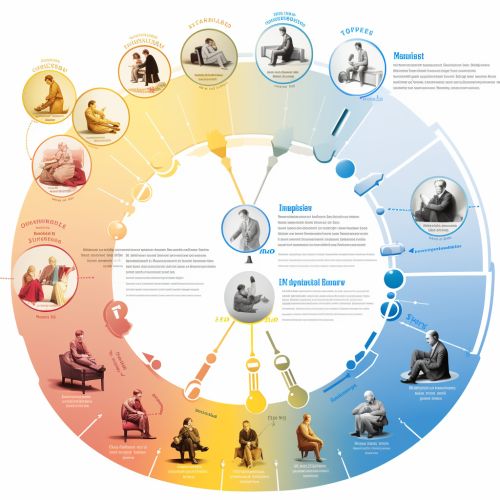Behavioral psychology
Introduction
Behavioral psychology, also known as behaviorism, is a theory of learning based on the idea that all behaviors are acquired through conditioning. Conditioning occurs through interaction with the environment. Behaviorists believe that our responses to environmental stimuli shape our actions.
History
Behavioral psychology emerged in the late 19th and early 20th centuries, with key contributors including Pavlov, Watson, and Skinner. Each of these psychologists contributed unique theories and experiments that shaped the development of behaviorism and our understanding of behavioral conditioning.


Principles of Behavioral Psychology
Behavioral psychology is primarily concerned with observable behavior, as opposed to internal events like thinking and emotion. This is because observable (i.e., external) behavior can be quantitatively measured and thus subject to scientific inquiry. The main principles of behavioral psychology include:
- Stimulus-Response (S-R) Theory: This principle suggests that a response is elicited by a specific stimulus. This theory was primarily developed by Ivan Pavlov, a Russian psychologist who discovered the phenomenon of classical conditioning.
- Operant Conditioning: This principle, developed by B.F. Skinner, suggests that behavior can be shaped by reinforcement or punishment. This theory is often applied in educational settings to encourage desirable behaviors and discourage undesirable ones.
- Reinforcement Theory: This principle suggests that behavior that is reinforced tends to be repeated (i.e., strengthened); behavior that is not reinforced tends to die out-or be extinguished (i.e., weakened).
Classical Conditioning
Classical conditioning is a process that involves creating an association between a naturally existing stimulus and a previously neutral one. Ivan Pavlov's experiments with dogs are good examples of this process. Pavlov presented dogs with a ringing bell followed by food. The food elicited salivation (a reflex), and after repeated bell-food pairings, the bell also caused the dogs to salivate. In this case, the sound of the bell was the conditioned stimulus.
Operant Conditioning
Operant conditioning (also known as instrumental conditioning) is a process by which behavior is modified by its consequences. B.F. Skinner is regarded as the father of operant conditioning and introduced a new term to behavioral psychology, reinforcement. In operant conditioning, reinforcement strengthens the behavior or increases its frequency. Reinforcement can be positive or negative, and punishment is also a form of operant conditioning.
Applications of Behavioral Psychology
Behavioral psychology has been applied in numerous settings, including:
- Education: Teachers use principles of behavioral psychology to motivate students and encourage learning.
- Clinical Psychology: Behavioral therapy and behavior modification are often used in treatment plans for patients with a variety of disorders.
- Business: Behavioral principles can be used to motivate employees, increase productivity, and improve product quality.


Criticisms of Behavioral Psychology
While behavioral psychology has been widely accepted, it has also faced a number of criticisms. Critics argue that behaviorism is a one-dimensional approach to understanding human behavior and that behavioral theories do not account for free will and internal influences such as moods, thoughts, and feelings.
Conclusion
Behavioral psychology is a fascinating field that has broad applications in many areas of life. Despite its criticisms, it has provided valuable insights into how behavior is learned and reinforced, which has had significant implications for therapy and education.
